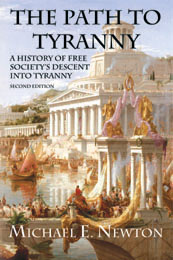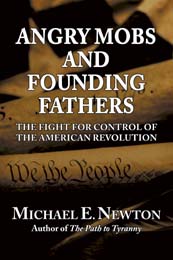Today, Stephen Brumwell presents a “forgotten” essay possibly written by Alexander Hamilton. Brumwell argues “there’s compelling evidence” that Hamilton penned this essay. According to Brumwell:
A long article…appeared on Thursday October 12 in The New-York Packet, and the American Advertiser… The essay of October 12, 1780, which sought to exploit the widespread anger over Arnold’s treason to revitalize the flagging and divided Patriot war-effort, was anonymous, but carried the bold, capitalized pseudonym “PUBLIUS.” Typical for that era, the same piece was swiftly re-published by other newspapers, making the front page of The Pennsylvania Gazette of October 18, 1780 (“From the New York Packet, Fishkill, October 12”) and later surfacing in The Norwich Packet, and the Weekly Advertiser on Tuesday October 24 (“From the Fish Kill Papers”).
Considering this coverage, including a conspicuous slot in one of early America’s best-known newspapers, it is surprising that neither Hamilton’s biographers nor the editors of his writings have noted this article, if only to eliminate it as the work of some other, less celebrated, “Publius.”
Publius, of course, is the pseudonym Hamilton, Madison, and Jay used to write the Federalist essays in 1787–88. Hamilton had also used it in 1778 to criticize Samuel Chase for “allegedly deploying insider knowledge in an unfair – and unpatriotic – bid to monopolize the flour market.” Read Brumwell’s post for this and more evidence he presents.
As I had done in Alexander Hamilton: The Formative Years regarding other essays attributed to Hamilton, I decided to do a simple stylometric analysis of this Publius essay, the complete text of which Mr. Brumwell was kind enough to provide in a link. Looking at word length and sentence length compared to known Hamilton essays, here are the results:

It clearly appears based on sentence length that Hamilton did not pen this essay. Although it is possible that Alexander Hamilton chose to write this essay in a different style, this is strong evidence against Hamilton’s authorship.
Of course, I also read this Publius essay and I think it does not read like something Hamilton wrote, but that is just the personal opinion of one person.
Mr. Brumwell also writes of an essay by A.B. that Hamilton may have also authored:
Previously unrecorded, however, is the fact that “A. B.” had also been used by the anonymous author of an article published in Loudon’s newspaper on April 20, 1780. Written at a time when Hamilton was with Washington at Morristown, New Jersey, this essay tackled a topic close to his heart: the worsening state of his country’s finances as the paper currency issued by Congress fueled rampant inflation. In particular, it criticized Congress’s decision of March 18 to fix “Continental money at forty to one.”
“A.B” was the pseudonym Hamilton used for his Continentalist essays and he may have also used it to try to convince British General Henry Clinton to trade Benedict Arnold for John André. Unfortunately, Mr. Brumwell did not provide the complete text of this essay for analysis.
I salute Mr. Brumwell for his great find and surely hope other evidence can be found regarding the authorship of these essays, but until then we must be cautious when trying to attribute anonymous works to certain people without any direct evidence.




Interesting On Mar 9, 2016 6:03 PM, “Michael E. Newton” wrote:
> Michael E. Newton posted: “Today, Stephen Brumwell presents a > “forgotten” essay possibly written by Alexander Hamilton. Brumwell argues > “there’s compelling evidence” that Hamilton penned this essay. According to > Brumwell: A long article…appeared on Thursday October 12 in The New-Yo” >
(I’m sure you know this, Michael, but I offer this for readers who may not be familiar with the vagaries of writing analysis:)
Stylometric analysis is a very interesting and useful tool, but (as you’ve suggested) does not provide proof. Sentence length is one of many writing style attributes that can be assessed; it would be interesting to also look at frequency of individual words, word pairs (especially unusual word pairs) and other attributes.
A factor to consider in sentence length is the ambiguity of period handwriting. It’s often very difficult to discern the difference between periods, commas, semicolons and colons, that therefore difficult to differentiate between sentences and independent clauses. The Publicus essay appeared in print, but how well did the typesetter follow the author’s punctuation? The same question could be asked about the known Hamilton essays used for stylometric comparison with the Publicus essay.
Another factor is the date of the writing samples, and their target audience. Writing style evolves with the author’s age, and skilled writers adapt their style; for example, an essay written for presentation to a legislative committee might differ significantly from an essay written for a newspaper.
I bring these things up just to show that stylometric analysis, although useful, must be used with caution. It is a tool that provides evidence to analyze, but not proof.
Thank you Don for your comments.
You are correct that stylometrics do not provide proof, but they do provide evidence. Likewise, nothing Mr. Brumwell wrote can be considered “proof”; he only presents evidence.
You argue that possibly “the typesetter follow the author’s punctuation.” But this is the same printer who published Hamilton’s Continentalist, which I of course included in the known essays in my analysis. Moreover, if this type of variation was common, as you suggest, we would see that kind of variance in the stylometrics.
You also point out, “Another factor is the date of the writing samples.” In fact, I point out that very issue in my book when addressing some essays written in 1773 and 1774 that are attributed to Hamilton. Included in the known Hamilton essays in my analysis are his political writings from 1774, 1775, 1778, and 1781-82. So this essay from 1780 fits within the given date range.
Again, I only presented evidence, not proof. As the title of my piece states, we have “reasons to be cautious.” Or, as I conclude my essay, “we must be cautious when trying to attribute anonymous works to certain people without any direct evidence.” That is not to say that Hamilton didn’t write it. Nor am I saying that he did. I am only saying that it is possible but we simply don’t know.